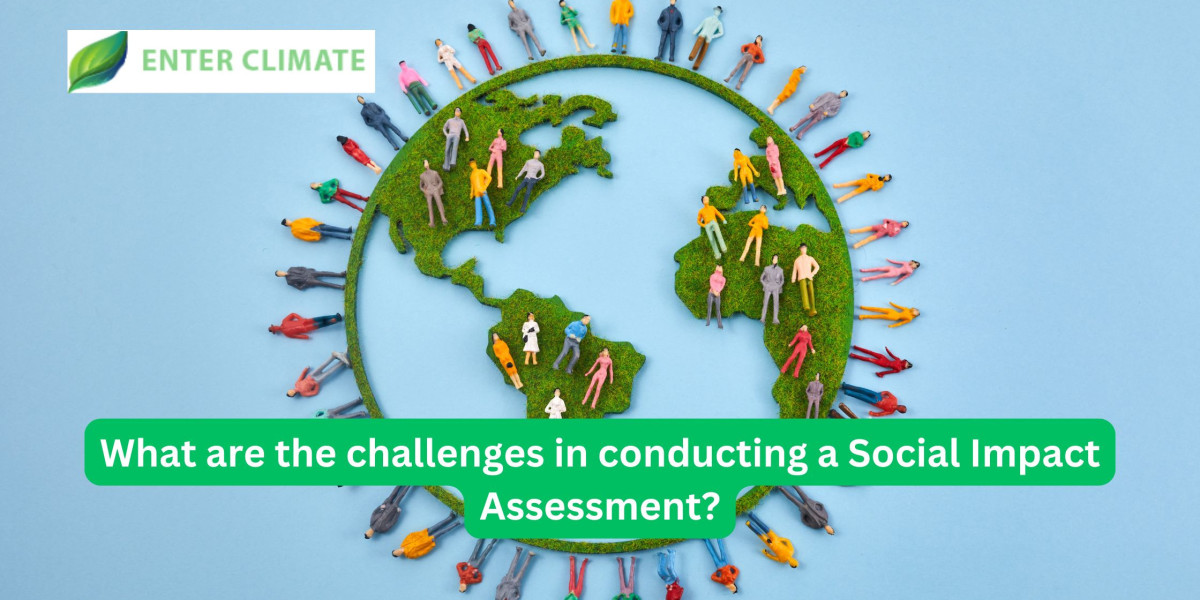Social Impact Assessment (SIA) plays a crucial role in evaluating the potential effects of a project or policy on a community, society, or the environment. Whether it’s a corporate project, government policy, or NGO initiative, SIA helps to ensure that decisions are socially responsible and beneficial. However, conducting a Social Impact Assessment can be challenging, and it requires careful planning, data collection, stakeholder engagement, and analysis.
In this blog, we will explore the common challenges faced during the process of conducting an SIA. We will also discuss how these challenges can be mitigated for more effective and meaningful social impact evaluation.
1. Lack of Clear Definition of Social Impacts
One of the biggest challenges in conducting a Social Impact Assessment is the lack of a clear definition of what constitutes a "social impact." Social impacts can vary widely depending on the context of the project, community, and stakeholders involved. They may include economic changes, shifts in social norms, effects on health and education, or changes in local governance.
Without a well-defined understanding of what needs to be measured, an SIA can become vague or unproductive. It can lead to incomplete or inaccurate assessments, resulting in poor decision-making.
Solution:
To overcome this challenge, it’s important to start with a comprehensive framework that outlines what types of social impacts are relevant to the specific project or policy. Stakeholder consultation and expert input should help clarify the key social impacts to be assessed, ensuring a focused and targeted approach.
2. Inadequate Stakeholder Engagement
Stakeholder engagement is a cornerstone of Social Impact Assessment, but it’s not always easy to achieve. In many cases, stakeholders may include local communities, government bodies, NGOs, businesses, and other interest groups. Each group can have varying priorities, interests, and levels of involvement.
A lack of meaningful engagement can result in a social impact assessment that does not accurately reflect the concerns of the community or other affected parties. Furthermore, poor engagement can lead to resistance from stakeholders, making it difficult to implement the project or policy effectively.
Solution:
To tackle this issue, SIA practitioners need to prioritize transparent, inclusive, and ongoing stakeholder engagement. This can be achieved through surveys, focus groups, interviews, and public consultations. It’s also essential to consider the needs and concerns of marginalized or vulnerable groups who might otherwise be overlooked.
Building trust through consistent communication and addressing concerns as they arise can help ensure more meaningful engagement and better outcomes.
3. Limited Data Availability
Another challenge in conducting Social Impact Assessments is the limited availability of reliable data. In some regions or sectors, particularly in developing countries like India, access to high-quality data on social indicators such as income levels, education, health, and local infrastructure may be scarce or outdated.
Without sufficient and accurate data, it becomes difficult to predict and measure the social impacts of a project. This challenge can lead to inaccurate assessments and missed opportunities to address underlying social issues.
Solution:
To overcome data limitations, it is essential to use a combination of data sources, including government reports, academic studies, NGO data, and local surveys. Using technology, such as remote sensing and data analytics, can also help gather more accurate and real-time data. Collaborating with local organizations and research institutes can provide valuable insights and ensure data accuracy.
4. Difficulty in Quantifying Social Impacts
Social impacts are often qualitative in nature, making them difficult to quantify. While it’s relatively easy to measure economic outcomes, such as job creation or income growth, it’s much harder to measure intangible social impacts like changes in social cohesion, community well-being, or cultural preservation.
This can create challenges in comparing social impacts across different projects or policies and in providing evidence to stakeholders on the effectiveness of the project.
Solution:
One way to address this challenge is to develop a mixed-methods approach that combines quantitative data (such as economic indicators) with qualitative data (such as interviews, focus groups, or case studies). This will provide a more complete and nuanced understanding of the social impacts.
Additionally, standardized social impact indicators can be developed to measure specific outcomes more consistently across projects.
5. Short-Term vs. Long-Term Impacts
Many social impacts unfold over a long period, but SIA often focuses on short-term outcomes because they are easier to measure. Short-term impacts are more immediately visible, but long-term impacts—such as changes in community structure or cultural dynamics—are just as important, if not more so.
Focusing too heavily on short-term impacts can lead to misguided decisions and overlook the full scope of the project’s social consequences.
Solution:
It is crucial to balance the assessment of both short-term and long-term impacts. A good SIA should use forecasting techniques to predict potential long-term consequences and include mechanisms for ongoing monitoring and evaluation to track changes over time.
6. Resistance to Change and Cultural Sensitivity
Social Impact Assessments often require organizations to make changes to their projects or policies, which may be met with resistance from both internal stakeholders and the affected communities. Additionally, some projects may impact culturally sensitive issues that require a high level of cultural sensitivity.
Resistance to change can delay or derail a project, while insensitivity to cultural issues can lead to social unrest and undermine the project’s credibility.
Solution:
To address this challenge, it’s important to foster a culture of openness and flexibility in the planning phase. Engaging local communities early in the process and understanding their cultural values can help design interventions that are sensitive and aligned with community needs. Additionally, conducting cultural impact assessments alongside SIAs can help ensure that culturally sensitive issues are given due consideration.
7. Lack of Standardized Methodologies
Social Impact Assessment methodologies can vary widely, and there is no universally accepted approach for conducting them. This lack of standardization can lead to inconsistencies in how impacts are evaluated across different projects or industries.
Solution:
Adopting best practices from global standards and frameworks such as the IFC Performance Standards or ISO 14001 can provide a more structured approach to SIA. Additionally, encouraging the development of national or sector-specific SIA guidelines can help create more consistent methodologies.
FAQs:
What is the purpose of a Social Impact Assessment?
- A Social Impact Assessment helps evaluate the social consequences of a project or policy. It aims to identify both positive and negative impacts on communities and suggest strategies to enhance benefits while mitigating adverse effects.
How can businesses address challenges in Social Impact Assessments?
- Businesses can address challenges by ensuring comprehensive stakeholder engagement, using reliable data sources, incorporating both short-term and long-term impacts, and adapting culturally sensitive approaches to local contexts.
Is Social Impact Assessment required by law?
- In many countries, including India, Social Impact Assessment is mandated for large-scale infrastructure projects and government policies, particularly when they have the potential to affect local communities or the environment.
Conclusion:
Conducting a Social Impact Assessment is a complex but necessary task for ensuring that projects and policies are socially responsible and beneficial. The challenges outlined above ranging from defining social impacts and engaging stakeholders to overcoming data limitations and resistance to change can make the process difficult. However, by using appropriate methodologies, embracing inclusive engagement, and ensuring a balanced approach, these challenges can be mitigated, leading to more effective and sustainable outcomes.
By addressing these challenges head-on, businesses, government agencies, and organizations can make more informed decisions that contribute to positive social change and development.








